Lichen planus: Dermatologists' tips to help you feel better
Practicing a stress-management technique like meditation can help you feel better
Stress can trigger or worsen lichen planus.

If you have lichen planus, there are things you can do to help ease symptoms and reduce flare-ups. Here’s what dermatologists recommend in general and for specific areas of the body.
Partner with a board-certified dermatologist. Your dermatologist knows how to manage this disease, so you can feel better.
Apply and take medication as directed. Many people can manage lichen planus without medication. If medication is prescribed, applying (or taking it) as directed can ease symptoms, reduce flare-ups, and prevent the condition from getting worse.
Manage your stress. Do you feel that stress can worsen your symptoms like itch or lead to flare-ups? Practicing a stress management technique, such as meditation or mindfulness, may reduce your stress.
Keep all follow-up appointments with your dermatologist. This allows your dermatologist to monitor you. When your dermatologist prescribes medication or light therapy, follow-ups allow your dermatologist to adjust treatment as needed.
Skin
Lichen planus most often occurs on the skin. If this condition affects your skin, here’s what dermatologists recommend:
Try to avoid scratching, rubbing, and injuring your skin, as doing any of these can cause a flare-up. An injury, whether caused by a burn, cut, or scratch, can trigger new bumps and other signs of lichen planus.
Practice gentle skin care. Skin with lichen planus is inflamed, so it’s easily irritated. To reduce the chance of irritating your skin:
Use warm water to wash your skin. Hot water can dry your skin, which could cause a flare-up.
When taking a shower or bath, wash skin with lichen planus gently with fragrance-free cleanser. Use your fingertips to gently apply the cleanser, using a circular motion. Remove the cleanser by gently splashing it off with water. After bathing, gently pat your skin dry with a clean towel.
Ease itchy skin with a cool compress or oatmeal bath rather than scratching or rubbing. When you scratch or rub itchy skin, you may develop an infection. Scratching or rubbing can also worsen lichen planus.
To make a cool compress, place a clean washcloth under cool water, wring out the extra water, and place the cool, damp washcloth on your skin
A cool compress can ease the itch.

If you cannot stop scratching, cover itchy skin with bandages. This helps to reduce the impact that scratching has on your skin and can help prevent an infection.
Scalp (lichen planopilaris)
Early treatment can prevent scarring and permanent hair loss. To help patients get the best results from a treatment plan for their scalp, dermatologists recommend the following:
Keep your hair (and scalp) clean. This can reduce infections. You want to be gentle when washing your hair, so use a mild, sulfate-free shampoo. This can reduce inflammation, which may reduce scarring and hair loss.
Save styling that uses heat or chemicals (i.e., blow drying, hair coloring, or relaxing) for special occasions. Heat and chemicals can irritate your scalp.
Instead of scratching or rubbing your itchy scalp, relieve the itch by applying a cool compress. Scratching or rubbing your scalp can worsen inflammation, which can lead to hair loss and scarring.
Watch for symptoms that the condition is worsening. Symptoms include scalp tenderness, inflammation (redness on lighter skin tones and a brown or gray discoloration on darker skin tones), scaling, and hair loss. If you see any of these, let your dermatologist know.
Mouth (oral lichen planus)
To reduce discomfort and flare-ups in your mouth, dermatologists recommend the following:
Brush your teeth twice a day and floss once a day. If your mouth feels painful, you may not want to brush and floss. However, avoiding these can worsen oral lichen planus and lead to unhealthy teeth and gums. Dermatologists recommend the following to reduce discomfort from brushing and flossing:
Gently brush twice a day with a soft bristle toothbrush or sonic toothbrush set on low. Use a bland toothpaste, such as one that’s unflavored and doesn’t contain sodium lauryl sulfate..
Floss once a day with tape or floss that is unflavored or a water flosser.
If your dermatologist or dentist prescribes a specific mouthwash, use it.
Have a professional dental cleaning every 3 to 4 months. When plaque and tartar build up in your mouth, flare-ups can increase. Cleanings can remove this buildup. By reducing buildup and bacteria in your mouth, dental cleanings can also reduce your risk of developing an infection.
Avoid chewing on your lips and the inside of your mouth. These can worsen the disease in your mouth.
Try to stop smoking, chewing tobacco, and drinking alcohol. Oral lichen planus may increase your risk of developing oral cancer. If you smoke, chew tobacco, or drink, you raise this risk even more.
Stop eating foods and drinking beverages that seem to irritate your mouth. This list may include spicy foods, salty foods and snacks, citrus fruits and juices, tomatoes and foods made with tomatoes, and drinks that contain caffeine.
Nails
If lichen planus affects your nails, it can cause your nails to develop ridges, split, or thin. Some people lose one or more nails. Making the following a habit, along with using the medical treatment that your dermatologist prescribes, can minimize damage to your nails and improve your overall nail health.
Moisturize your nails and cuticles by applying petroleum jelly or a cream that contains lanolin. Your dermatologist will tell you how often to apply moisturizer. This is often once or twice a day or every night.
Keep your nails short and smooth.
Try not to bite or pick at your nails and cuticles.
Wear gloves to protect your hands while doing housework, gardening, or anything that makes your hands wet.
Avoid exposing your nails to harsh chemicals like paint thinner and household cleansers.
Look for changes to your nails, such as a color change to the skin around one or more nails or swelling. Contact your dermatologist right away if you spot any changes.
Genitals
If lichen planus develops on your genitals, dermatologists recommend the following:
Take showers instead of baths.
Relieve itching and swelling by placing a cold pack wrapped in a clean towel on the areas. Try not to scratch or rub the area.
Wear loose-fitting undergarments, pants, and shorts.
Lichen planus can affect your health and well-being. No one understands lichen planus better than your board-certified dermatologist. To find a board-certified dermatologist — an FAAD — in your area, go to Find a Dermatologist.
Images
Getty Images
Reference
Goldstein BG, Goldstein AO, et al. (section editors: Dellavalle RP, Callen JP). “Lichen planus.” UpToDate. Literature review current through 11/2024. Last updated 8/2024.
Written by:
Paula Ludmann, MS
Reviewed by:
DiAnne Davis, MD, FAAD
Elisa Gallo, MD, FAAD
William Warren Kwan, MD, FAAD
Shari Lipner, MD, PhD, FAAD
Last updated: 1/27/25
 Atopic dermatitis: More FDA-approved treatments
Atopic dermatitis: More FDA-approved treatments
 Biosimilars: 14 FAQs
Biosimilars: 14 FAQs
 How to trim your nails
How to trim your nails
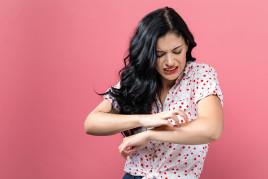 Relieve uncontrollably itchy skin
Relieve uncontrollably itchy skin
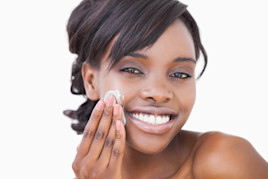 Fade dark spots
Fade dark spots
 Untreatable razor bumps or acne?
Untreatable razor bumps or acne?
 Tattoo removal
Tattoo removal
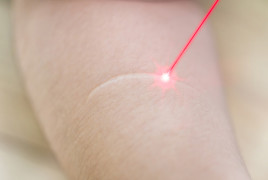 Scar treatment
Scar treatment
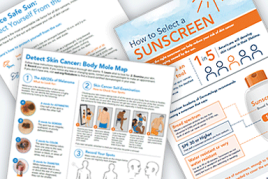 Free materials to help raise skin cancer awareness
Free materials to help raise skin cancer awareness
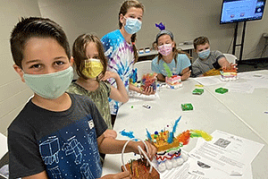 Dermatologist-approved lesson plans, activities you can use
Dermatologist-approved lesson plans, activities you can use
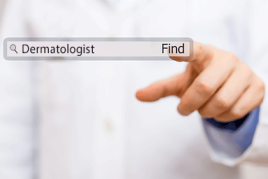 Find a Dermatologist
Find a Dermatologist
 What is a dermatologist?
What is a dermatologist?
